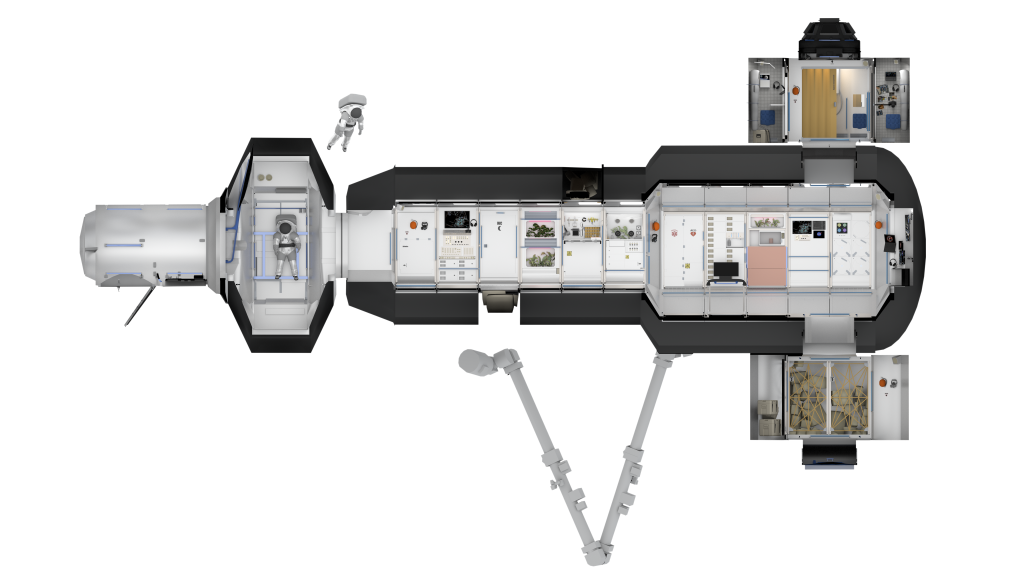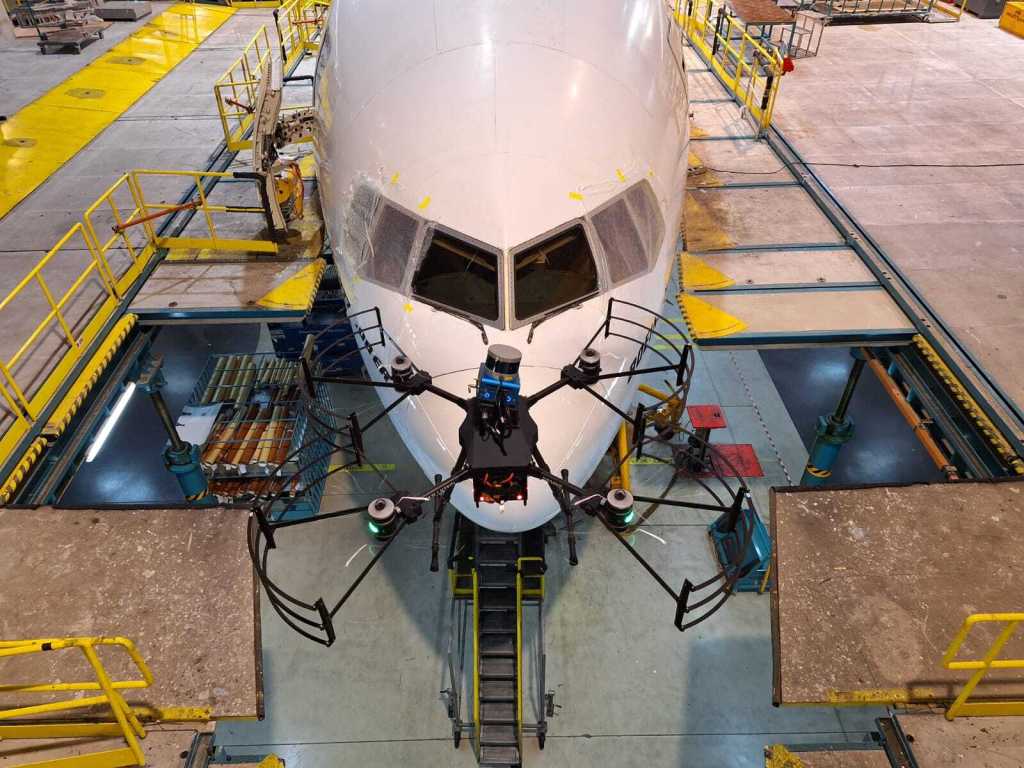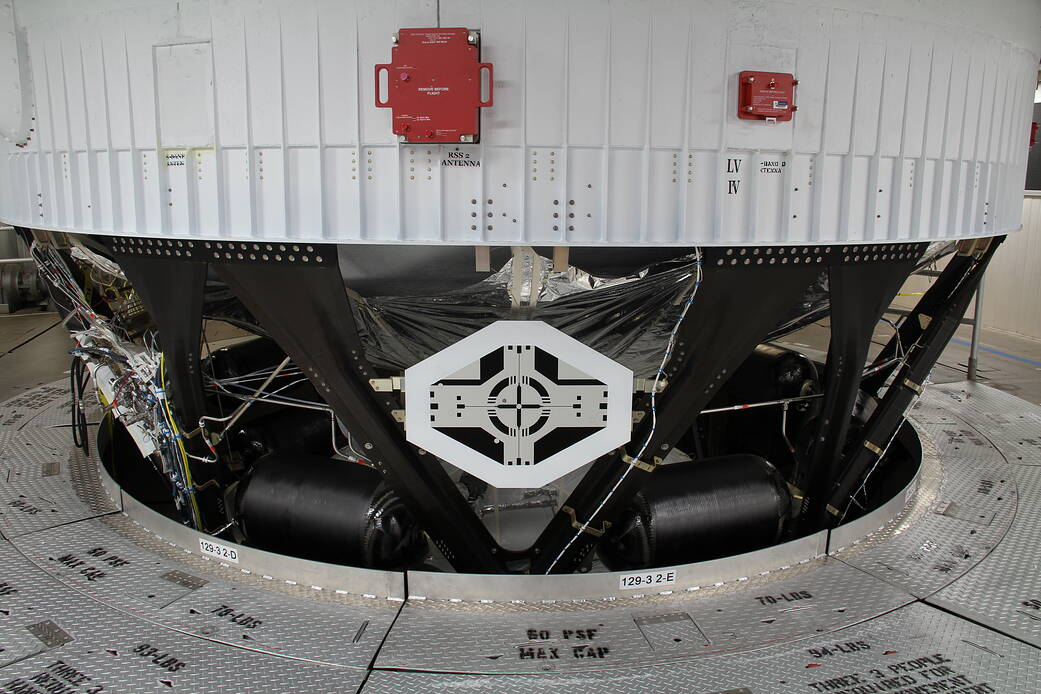A critical auxiliary target for NASA’s Artemis II mission is ready for flight following testing at United Launch Alliance’s (ULA) Florida facility. Teams with the company added the target onto the in-space propulsion stage for NASA’s SLS (Space Launch System) rocket at ULA’s Delta Operations Center at Cape Canaveral Space Force Station in Florida, May 16. Following the safe separation of NASA’s Orion spacecraft from the rocket’s upper stage, the four astronauts aboard Orion will use the target affixed to the in-space stage for a proximity operations demonstration to test Orion’s piloting qualities. The recently installed target underwent illumination testing in May to ensure the target will be visible in the different lighting conditions of space.
The SLS rocket delivers propulsion in phases to send the Artemis missions to the Moon. Its ICPS (interim cryogenic propulsion stage) and its single RL10 engine fires twice during the Artemis II mission to put the Orion spacecraft and astronauts into a high-Earth orbit, where they will then check out Orion’s manual handling qualities using the ICPS and its auxiliary target before then heading to the Moon.
During the demonstration, astronauts will use the two-foot target to test navigation and other critical Orion systems to assess its ability to approach and fly alongside another large spacecraft in space before future Artemis missions that require docking capabilities.
NASA is working to land the first woman and first person of color on the Moon under Artemis. SLS is part of NASA’s backbone for deep space exploration, along with the Orion spacecraft, advanced spacesuits and rovers, the Gateway in orbit around the Moon, and commercial human landing systems. SLS is the only rocket that can send Orion, astronauts, and supplies to the Moon in a single mission.
Image credit: ULA


























